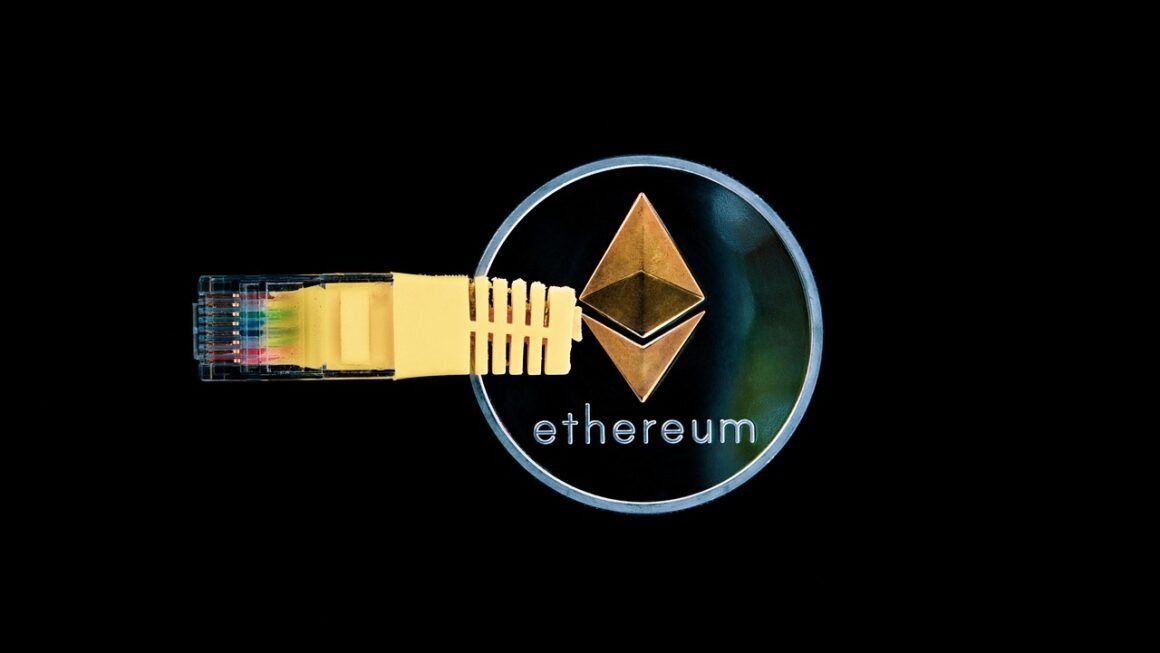The promise of cryptocurrency, a decentralized and transparent financial system accessible to all, hinges on one critical factor: scalability. Imagine a world where instant, low-cost transactions are the norm, empowering everything from micro-payments to complex financial instruments. However, the current reality often involves slow transaction speeds and high fees, hindering widespread adoption. Overcoming these scalability challenges is paramount to unlocking the true potential of blockchain technology. This article delves into the core of crypto scalability, exploring various solutions, their trade-offs, and the future of blockchain’s ability to handle global transaction volumes.
Understanding Crypto Scalability
What is Scalability?
Scalability, in the context of cryptocurrency, refers to a blockchain’s ability to handle a large number of transactions per second (TPS) without compromising speed, cost, or security. A scalable blockchain can process transactions quickly and efficiently, even during periods of high demand. Think of it like a highway: if only a few cars are on it, traffic flows smoothly. But if too many cars try to use the highway at the same time, traffic jams form, leading to delays and frustration. Similarly, blockchains with poor scalability experience slow transaction times and increased fees when transaction volume increases.
Why is Scalability Important?
Scalability is crucial for the mass adoption of cryptocurrencies. Here’s why:
- Improved User Experience: Fast transaction speeds and low fees are essential for a seamless user experience.
- Increased Adoption: Scalable blockchains can handle a larger user base and support a wider range of applications.
- Real-World Applications: Scalability enables the use of cryptocurrencies in everyday transactions, such as retail payments and supply chain management.
- Global Financial System: A scalable blockchain can potentially serve as a global financial infrastructure, supporting trillions of dollars in transactions.
Currently, many popular cryptocurrencies struggle with scalability. For example, Bitcoin can process around 7 transactions per second (TPS), while Ethereum, prior to its transition to Proof-of-Stake, could handle approximately 15 TPS. Visa, on the other hand, can handle thousands of TPS. This discrepancy highlights the need for significant improvements in blockchain scalability.
Layer-1 Scaling Solutions
Layer-1 solutions involve modifying the underlying blockchain protocol to improve scalability. These solutions directly address the limitations of the base layer.
Increasing Block Size
One of the simplest layer-1 solutions is to increase the block size. Larger blocks can accommodate more transactions, increasing the TPS.
- Example: Bitcoin Cash implemented this by increasing the block size to 8MB (later increased further).
- Pros: Relatively easy to implement.
- Cons: Can lead to increased centralization, as larger blocks require more powerful hardware to process, potentially excluding smaller nodes from participating in the network. It also increases bandwidth requirements and storage costs for nodes.
Sharding
Sharding involves dividing the blockchain into smaller, more manageable pieces called “shards.” Each shard can process transactions independently, and then the results are combined.
- Example: Ethereum 2.0 (formerly known as Serenity) aimed to implement sharding as a core component of its scalability solution, though this has now been refocused.
- Pros: Significantly increases TPS without compromising security.
- Cons: Complex to implement and requires careful coordination between shards. Vulnerability to cross-shard attacks need to be carefully addressed.
Consensus Mechanism Changes
The consensus mechanism used by a blockchain significantly impacts its scalability. Proof-of-Work (PoW), used by Bitcoin, is secure but computationally intensive and slow. Proof-of-Stake (PoS) and its variations (Delegated Proof-of-Stake, etc.) offer faster transaction times and lower energy consumption.
- Example: Ethereum transitioned from PoW to PoS (The Merge), which drastically reduced its energy consumption and laid the groundwork for future scalability improvements.
- Pros: Improved energy efficiency and faster transaction confirmation times.
- Cons: Potential security trade-offs compared to PoW. The centralization risks of some PoS variations must be carefully considered.
Layer-2 Scaling Solutions
Layer-2 solutions are built on top of an existing blockchain (Layer-1) to improve scalability without modifying the underlying protocol. They essentially offload some of the transaction processing to a separate layer.
Payment Channels
Payment channels allow users to conduct multiple transactions off-chain before settling the final balance on the main blockchain.
- Example: Bitcoin’s Lightning Network is a payment channel network.
- Pros: Extremely fast and low-cost transactions.
- Cons: Requires users to lock up funds in the channel, and is best suited for frequent transactions between the same parties.
Rollups
Rollups bundle multiple transactions into a single batch and submit them to the main blockchain. This reduces the load on the Layer-1 network and increases transaction throughput. There are two main types of rollups:
- Optimistic Rollups: Assume transactions are valid unless challenged. Transactions are executed off-chain and the resulting state is submitted to the main chain. There’s a challenge period where anyone can dispute the validity of the transactions. Examples include Arbitrum and Optimism.
- Zero-Knowledge Rollups (zk-Rollups): Use cryptographic proofs (SNARKs or STARKs) to verify the validity of transactions. These proofs are submitted to the main chain, eliminating the need for a challenge period. Examples include zkSync and StarkNet.
- Pros: Significant increase in TPS while maintaining security.
- Cons: Optimistic Rollups have a delay for withdrawals (challenge period). zk-Rollups are more complex to implement but offer faster finality.
Sidechains
Sidechains are independent blockchains that run parallel to the main blockchain. They have their own consensus mechanisms and can process transactions independently. A bridge connects the sidechain to the main chain, allowing users to transfer assets between them.
- Example: Polygon (formerly Matic Network) is a popular sidechain for Ethereum.
- Pros: High TPS and customizable features.
- Cons: Security depends on the sidechain’s own consensus mechanism. A compromised sidechain could affect the assets held within it. Requires trust in the operators of the bridge between the main chain and the sidechain.
Trade-offs in Scalability Solutions
No single scaling solution is perfect. Each comes with its own set of trade-offs, often summarized as the “Scalability Trilemma”: a blockchain can only truly optimize for two of the following three properties:
- Scalability: The ability to handle a large number of transactions.
- Security: Protection against attacks and fraudulent activities.
- Decentralization: Distribution of control across multiple participants.
For example:
- Increasing block size (Layer-1) improves scalability but can reduce decentralization by requiring more powerful hardware for nodes.
- Payment channels (Layer-2) offer high scalability but require users to lock up funds and are best suited for frequent transactions between the same parties, adding friction.
- Sidechains (Layer-2) can achieve high TPS but introduce potential security risks if the sidechain’s consensus mechanism is compromised.
Understanding these trade-offs is essential for choosing the right scaling solution for a particular blockchain or application.
The Future of Crypto Scalability
The quest for a truly scalable blockchain is ongoing. Several promising solutions are under development, and the landscape is constantly evolving. Future developments may include:
- Improved Layer-2 Solutions: Further optimization of rollups and other Layer-2 technologies. Research into more efficient bridging technologies between chains.
- Interoperability Solutions: Technologies that allow different blockchains to communicate and share data seamlessly, enabling cross-chain applications.
- Modular Blockchains: Architectures that separate the different functions of a blockchain (execution, data availability, consensus) into separate modules, allowing for greater flexibility and optimization. Celestia is one example of a project exploring this approach.
- Hardware Acceleration: Utilizing specialized hardware to accelerate transaction processing and improve scalability.
The convergence of these technologies is likely to play a crucial role in shaping the future of crypto scalability.
Conclusion
Crypto scalability remains a significant challenge, but the ongoing development of innovative solutions offers hope for a future where blockchains can handle global transaction volumes efficiently and securely. Layer-1 and Layer-2 solutions each offer unique approaches to address scalability limitations, but understanding their trade-offs is crucial. As research and development continue, the potential for a truly scalable and decentralized blockchain ecosystem becomes increasingly within reach, paving the way for widespread adoption of cryptocurrencies and blockchain technology.



